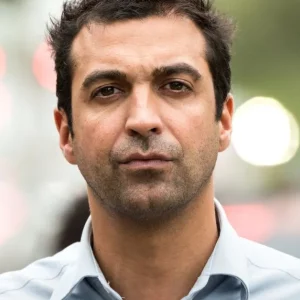Slow, repetitive, or twisting movements, known as dystonia, may occur after brain injury. Though the exact cause is unclear, researchers believe dystonia results from damage to the parts of the brain that control movement, particularly the basal ganglia. Therefore, dystonia is commonly referred to as a movement disorder.
It’s important to note that while there are other ways an individual can develop dystonia, such as genetics, this article will focus on acquired dystonia that occurs after a brain injury.
We’ll further discuss the most common signs of dystonia, why it occurs, and how to manage dystonia after traumatic brain injury.
What Causes Dystonia After Brain Injury?
To firmly grasp why abnormal movements like dystonia occur after brain injury, it first helps to understand how movement works.
Movement is a combination of agonist and antagonist muscles that work together. The agonist muscles initiate movement via contraction, like a pulley system. The antagonist muscles slow or prevent movement through muscle relaxation which produces an opposing force to the agonist muscles.
For example, to bend your elbow, your triceps must relax so the bicep can move. If the biceps and triceps flex at the same time, abnormal movement can result.
The agonist and antagonist muscles are controlled by the basal ganglia, a cluster of brain cells found inside the brain. The basal ganglia control exactly which and when muscles need to activate or relax. This is done by sending precise inhibitory (stop) or excitatory (go) signals to the appropriate muscle groups.
When areas of the brain responsible for movement are impacted by brain injury, particularly the basal ganglia, the harmonious signaling process is disrupted. As a result, an individual may begin to experience uncontrollable, abnormal movements, or dystonia.
Signs and Symptoms of Dystonia After TBI
Acquired dystonia after brain injury is divided into three sections, depending on the number of body parts affected.
- Focal dystonia impacts only one part of the body.
- Segmental dystonia strikes two or more adjacent muscle groups at once.
- General dystonia affects all parts of the body.
Early signs of dystonia may include trembling, foot cramping, rapid blinking, or dropping items frequently. The most common areas where repetitive twitching can occur are the eyes, jaw, mouth, neck, arms, and legs. Although less common, dystonia can also cause the torso to bend or writhe.
Oftentimes, dystonia is unnoticeable for several weeks or months after the brain injury. That’s because most signs of dystonia tend to be paroxysmal, meaning they come and go, rather than occur at once.
In this way, dystonia is similar but also distinctly different from spasticity, a condition characterized by muscle stiffening. While both conditions are caused by a disruption of signals from the brain, the onset of spasticity is often rapid, and symptoms may show as early as one week after injury.
Thus, it is essential to speak with your doctor or therapist if you’re experiencing new symptoms after a traumatic brain injury.
Managing Dystonia After Brain Injury

Dystonia causes slow, repetitive, or twisting movements which can get in the way of daily living activities. Fortunately, these movements can be effectively managed with proper treatment, when often involves a combination of methods.
The following treatment options can help manage dystonia after brain injury:
- Medications: Certain prescription medications, like baclofen, ease symptoms by affecting chemicals in the brain. However, many medications cause unwanted side effects and often work best in conjunction with physical therapy.
- Botox (Botulinum Toxin) Injections: This medication decreases the effects of dystonia by blocking the release of acetylcholine, which is a chemical that influences muscle contraction.
- Physical Therapy: Therapeutic exercises practiced with high repetition stimulate neuroplasticity and strengthen the connections that control movement. Through neuroplasticity, conditions affected by dystonia can naturally improve. This is the least invasive and sometimes most effective treatment for dystonia.
- Deep Brain Stimulation: An electrode can be surgically placed in the brain to send high-frequency signals to the areas that control involuntary muscle movement. It has been used to successfully treat tens of thousands of individuals with tremors or dystonia.
- Surgery: A surgical procedure called a thalamotomy involves removing the thalamus, a part of the brain that controls some involuntary muscle movements. This is a permanent, highly invasive treatment that should be used as a last resort once all other treatments have been exhausted.
Of all the treatment options, physical therapy is generally preferred because it helps rebuild the connection between the brain and muscles by activating neuroplasticity. Neuroplasticity is your brain’s ability to repair itself and create new neural pathways – which is best enhanced through repetitive, therapeutic exercise.
As neural connections improve, dystonia slowly decreases to allow you to move your muscles with greater ease. Some individuals need relief from the symptoms of dystonia before they can exercise comfortably, which is why a combination of treatments may be helpful.
Overcoming Dystonia After Traumatic Brain Injury
Dystonia is a movement disorder that can occur after a traumatic brain injury. It’s characterized by slow, repetitive, twisting movements that may come and go in episodes.
Partaking in physical therapy can help relieve symptoms of dystonia by promoting neuroplasticity. There are also other management techniques available, and you should talk to your therapist to find the best approach for you.









